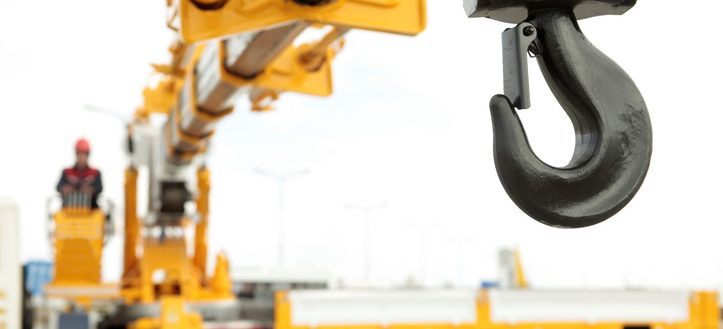New Year: Reducing Risk on the Job Site
We are nearing the end of the first quarter, and as mobile crane insurance specialists, we’d like to challenge everyone in the industry to make 2022 the safest year yet!
With that in mind, here are some action steps you can take to reduce the risk on the construction site.
- Know the hazards.According to OSHA statistics, while there are sometimes equipment failures, 93% of all crane accidents can be attributed to human error. When you drill into the specific causes of crane accidents, almost half are the result of coming into contact with power sources. The next most prominent cause of crane accidents is a fall, either a load falling or crane overturning.
- Do a thorough review of the route to the site and the site.Are there any power lines? Where are there other obstacles? Is there enough clearance when the crane is in operation? Can any of the power lines be turned off? When we know that nearly half of all crane accidents involve contact with a power source (and almost all crane accidents result from human error), it’s critical to be careful about doing due diligence and taking OSHA guidelines seriously.
- Take every precaution to keep cranes stable.Knowing the risk of falls or overturns, it’s essential to reduce risk. Ensure that maximum load capacity guidelines are understood and observed. Take time and care to center loads properly and secure them (using taglines to minimize swing or rotation as required). How are the ground conditions on-site? Are outriggers set up correctly? Be wary of wet saturated soil or thawing ground and use skidding as necessary.
- Monitor weather conditions.A downpour of rain or high winds can quickly make crane operation risky and, as we know, weather conditions can change very quickly. Low winds are ideal for lifts – gusts of wind can easily tip a crane or cause a fall. Significant rainfall can make ground conditions unsafe. Be watchful and ready to cease operations if the weather is dangerous for safe crane operation.
- Communicate well and follow procedures.Everyone on-site needs to help watch for hazards and communicate potential risks immediately. Establishing policies, such as a daily safety meeting and daily equipment checks, will help keep everyone safe. Always make sure that mobile crane insurance coverage is adequate and in place before you start work.
- Value a well-trained workforce.Insist on hiring licensed and qualified crane operators. Ensure that people are licensed to operate the specific crane or other equipment on the site per the requirements in your state.
Would you like to review your mobile crane insurance coverage? Contact us at New Heights Insurance Solutions to discuss the specialized crane insurance coverage for small and large crane fleets.

